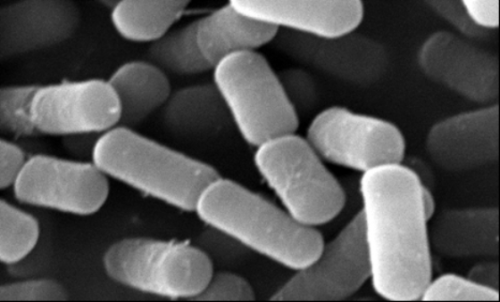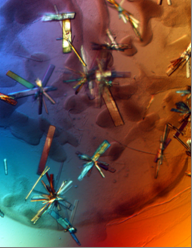Structural studies of a toxin from Bacillus cereus that causes diarrhea

Food poisoning caused by Bacillus cereus can lead to diarrhea which is probably caused by a 3-component toxin which is produced by this bacteria strain and which perforates and kills cells.
New doctoral research has revealed one of the protein structures of this toxin and has led to a better understanding of the mechanisms behind multi-component, pore-forming toxins. These findings can enhance food safety.
Bacteria produce toxins in order to defend themselves and to gain nourishment. Pore-forming toxins make up about a third of all bacterial toxins. These toxins kill cells by making holes in the cell walls, so causing leakages and swelling which in turn leads to the disintegration of the cells. The most common pore-forming toxins consist of one protein and in some special cases, of two proteins.
Toxins which consist of three proteins (3-component) are extremely rare. The bacterium Bacillus cereus produces two such 3-component toxins. One of them is non-hemolytic enterotoxin, also known as Nhe. It is believed that this toxin is the major food poisoning toxin produced by B. cereus. It is found in all B. cereus strains that cause food poisoning and in nearly all other B. cereus strains. The three proteins in the Nhe toxin are called NheA, NheB and NheC.
In the course of her doctoral research, Danh Phung discovered the crystalline structure of one of the proteins in the Nhe toxin: NheA. This protein is the least studied of this toxin complex, but its presence is essential in order to achieve full cellular toxicity and pore formation. Phung's study is also the first to show that the Nhe proteins form structures resembling pores.

The way the Nhe toxin works is not fully understood. Phung showed that NheB, which is believed to be the most important protein in this toxin complex, forms pore-like structures of itself and produces large amounts of molecules by means of an artificial cell membrane, for example a lipid. These findings indicate that the NheB protein undergoes structural changes before the pore-forming process, which involves the other Nhe-proteins, begins.
Danh Phung carried out her doctoral research at the Norwegian School of Veterinary Science in collaboration with the Sir Hans Krebs Institute at the University of Sheffield in the UK.
M.Sc. Danh Phung defended her doctoral research on 18th December 2012 at the Norwegian School of Veterinary Science (NVH) with a thesis entitled "Structure and mode of action on the Nhe enterotoxin from Bacillus cereus".
Provided by Norwegian School of Veterinary Science


















